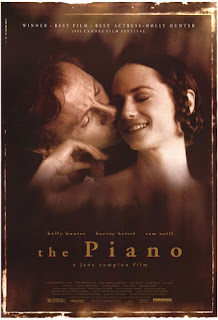April 12th: The Man Who Knew Too Much (Alfred Hitchcock, 1956)
An American couple vacationing in Morocco find themselves embroiled in international espionage when their young child is kidnapped.
Alfred Hitchcock had a formidable career in England throughout the 1920s and 30s before leaving to work in Hollywood, and his thriller The Man Who Knew Too Much was one of his biggest early successes. He considered doing a remake early during his work for the studios, but to fill a contract requirement with Paramount Pictures in the 1950s he finally proposed the idea.
Hitchcock's first move was to enlist the help of John Michael Hayes, a close collaborator who had written Rear Window and To Catch A Thief for the director. Oddly enough, Hitchcock requested that Hayes not look at any materials regarding the original, writing his script purely from Hitchcock's descriptions of the plot and characters. He was still working on the screenplay when shooting commenced.
First to join the cast was its star James Stewart, in his third of four films with Hitchcock (previously appearing in Rear Window and Rope). Over the protests of the studio, Hitchcock chose singer and musical comedy actress Doris Day for the female lead. Other members of the cast include French actor Daniel Gélin (Max Ophüls's Le Plaisir).
Headed by Hitchcock's usual cinematographer Robert Burks, photography began in Marrakesh, Morocco (a change of location from the original), most notably in the popular marketplace square Jemaa el-Fnaa. After witnessing the treatment of the local animals, Day insisted on better feeding conditions and became a lifelong animal rights activist. The shoot continued in various London locations including Camden, Brixton, Kensington, Mayfair, and a major set-piece at the famed Royal Albert Hall performance venue.
The film was edited by another mainstay collaborator, George Tomasini, and Hitchcock's legendary composer Bernard Herrmann wrote the mostly original score, opting to expand a memorable piece from the original film instead of writing new music for the climactic Royal Albert Hall scene (where he makes a cameo as the conductor), which lasts for 12 minutes without a line of dialogue and contains over 120 shots.
Premiering in competition at the Cannes Film Festival, the film would go on to be a moderate box office success in the United States. Hitchcock received a nomination from the Director's Guild for his work, but its sole Academy Award nomination (and win) was for "Que Sera, Sera", which would become Day's best-known song. Rights disputes kept the film and several others from this peak Hitchcock period out of circulation for over 25 years, until they were re-discovered by a new generation in the mid-1980s.
Running time is 2 hours.










Comments
Post a Comment